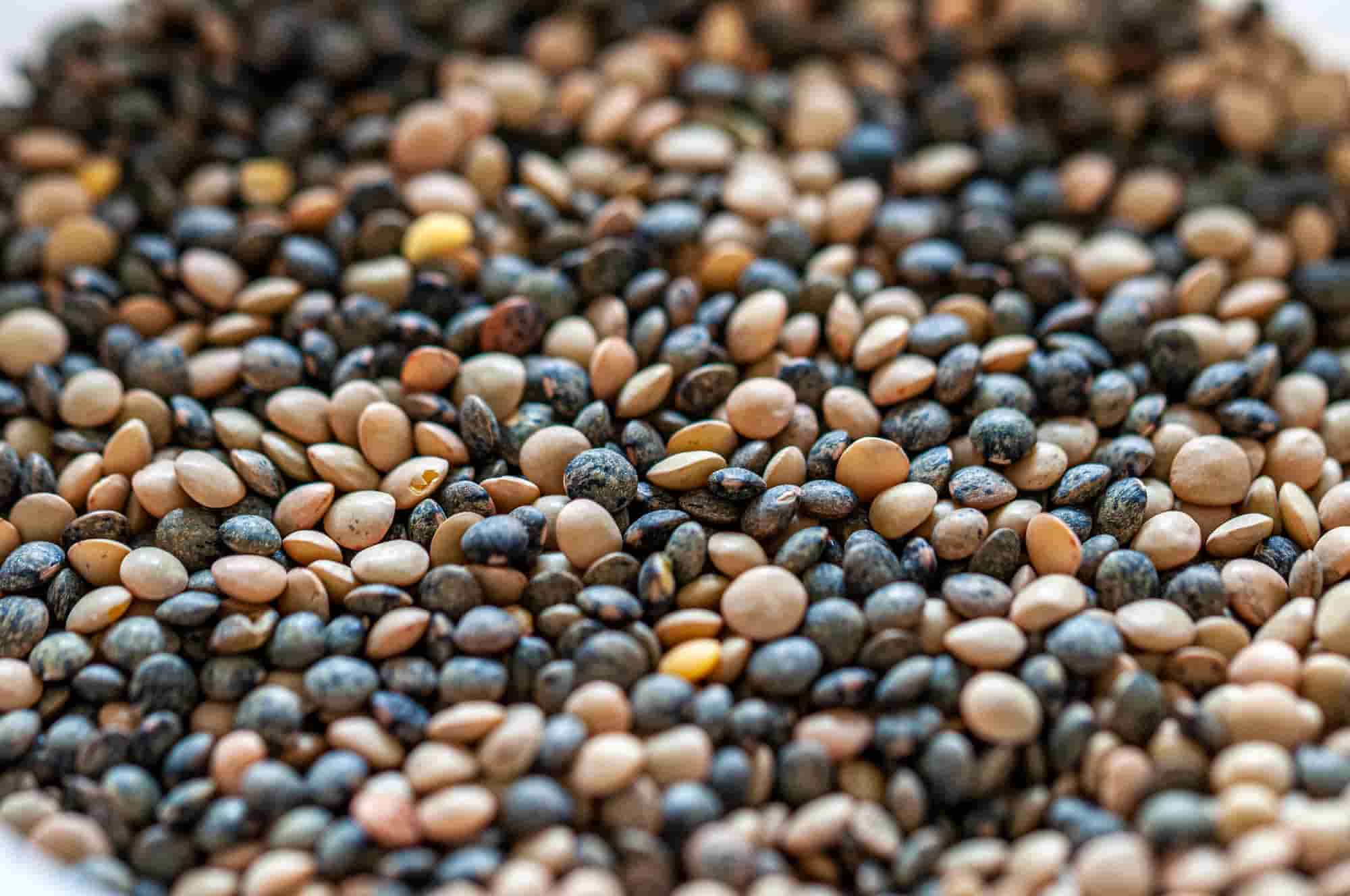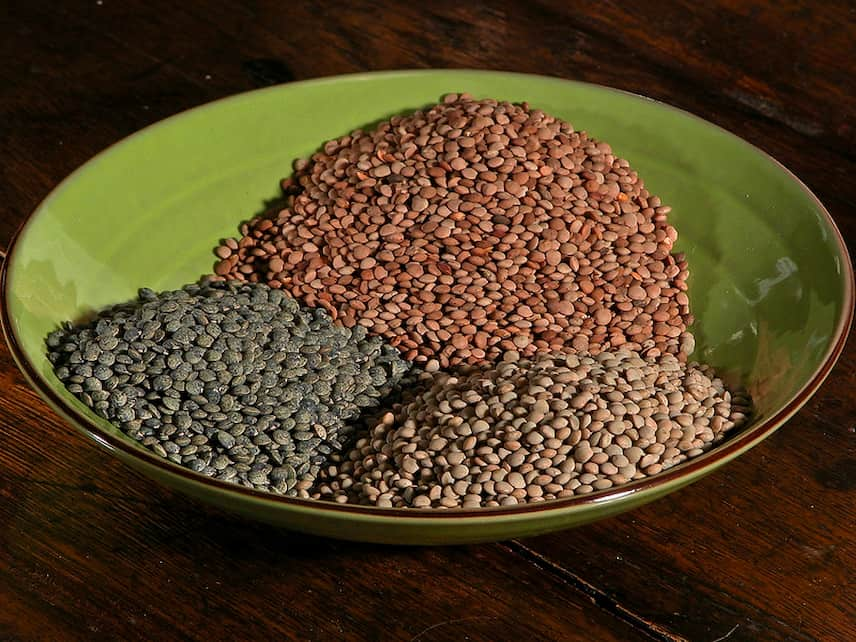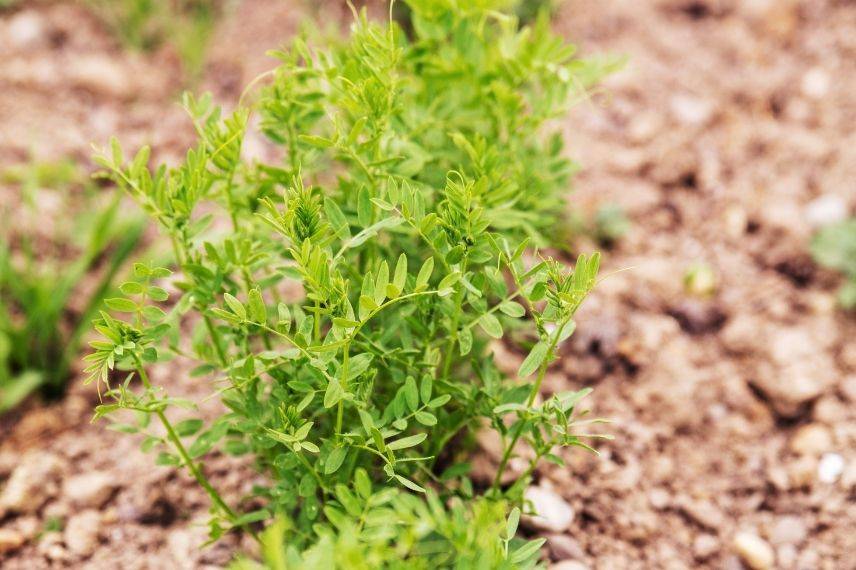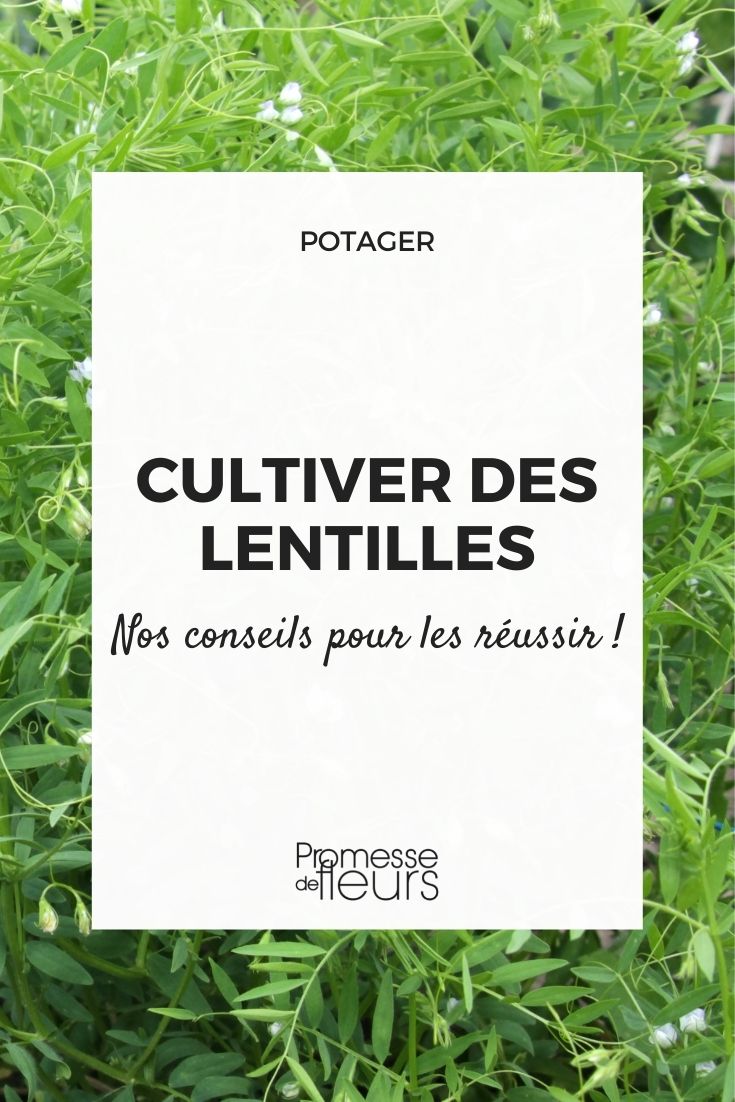
And what if you started growing lentils?
Sow, grow and harvest lentils
Contents
Whether you enjoy them in a hearty stew, as Indian dal, in soup, or cold in a salad, lentils combine flavour with nutritional benefits. Rich in plant-based proteins, as well as fibres, vitamins, antioxidants, and minerals like iron, magnesium, and phosphorus, lentils have much to offer! Moreover, they come in a wide range of colours, shapes, and textures, allowing for culinary variety. While lentils are a staple in certain agricultural regions, they are not commonly grown in home gardens, perhaps due to their low yield. However, growing lentils can be interesting, even fun, especially if you have a bit of space. Here are all our tips for sowing, growing, and harvesting lentils.
Lentil in a nutshell
Vegetable plant from the legume family, the lentil (Lens culinaris) is believed to have been cultivated since the Neolithic period. Later, engravings prove that the Pharaohs consumed lentils that grew along the Nile. It must be acknowledged that this small seed can satisfy all appetites while providing its nutritional benefits. Adding to the fact that it is low in calories and easily digestible, the lentil has every reason to hold a prominent place in kitchens.

Read also
Garden tools: essentialsA cultivation that requires a bit of attention
And in vegetable gardens? Fewer gardeners venture into growing this highly ramified plant that forms clumps 30 to 40 cm tall, made up of fine stems and small oblong leaves that end in tendrils. Perhaps because it has a rather low yield. Each pod contains only 2 small seeds, and a plant produces about 15 g of lentils. If we consider around ten plants per square metre, I’ll let you do the math…

Lentil cultivation
That said, planting lentils is not complicated and can be rewarding and fulfilling. Lentils do not require frequent watering or special fertilisation. However, they need the sun of a temperate climate, regular hoeing, and at least one earthing-up. For the gardener, they have the advantage of fixing nitrogen in the soil thanks to the nodosities of their roots. Thus, growing a plot of lentils every 4 years enriches the soil.
Multiple varieties
With lentils, you can see all the colours! For the lentil has several varieties that differ in shape and especially in colour:

The varieties of lentils Anicia, Flora, and Rosana
- The green lentil from Puy-en-Velay and Berry is the Anicia variety, which produces round, flattened grains, green marbled with blue.
- The blonde lentil from Saint-Flour is the Flora variety, which produces small ash-blonde grains.
- The Champagne lentil is the Rosana variety, which produces small pinkish grains.
- The coral lentil from the Corailie variety is very high in protein and cooks quickly. It has a lovely coral pink colour.
- The Beluga lentil, known as vegetable caviar, has small black, round, and smooth grains.
Where to sow lentils?
While lentils certainly need a sunny location, they prefer temperate climates. However, they can withstand drought.
In terms of soil, ordinary earth is suitable for them, provided it is light and well-drained. Accommodating, they can even grow in sandy and poor soils.
However, this soil must be well-prepared and worked deeply so that the lentil can root properly. This way, the plants do not topple, which is detrimental to the development of the pods. Start by carefully weeding the area designated for lentil cultivation. Then, loosen the soil deeply using a broadfork. Finally, refine the surface of the soil with a rake and a hand claw.
When and how to sow lentils?
Lentils are sown from March to May, when the risk of frost has passed. Although hardy, lentils prefer warmed soils. In the south of France, lentils can be sown in autumn.
The steps for sowing:
- Dig furrows spaced 40 cm apart and about 2 cm deep.
- Sow in clusters of 4 to 5 seeds, spaced 30 cm apart.
- Lightly cover with soil.
- Firm down with the back of the rake.
- Water generously using a watering can.
This regular watering continues for about ten days until the young plants emerge. It resumes at flowering time, from May to August, depending on the varieties, but should be done sparingly to avoid excessive foliage growth. Lentils do not like humidity, so be light-handed with the water. To minimise watering, it is best to mulch between the ranks.
Caring for lentil plants
Lens needs regular hoeing and at least one earthing-up. Hoeing helps to eliminate the adventive plants that lens fears. As for earthing-up, it should be done as soon as the plant reaches 10 cm. This ensures good rooting and a sturdy plant. To prevent lens clumps from toppling over, one can also stretch wires on either side of the ranks.
When and how to harvest lentils?
Harvesting takes place from late July to early September. It is important to harvest before the pods are fully ripe to avoid losing the seeds. Generally, the lentil plants turn golden yellow, and the pods are closed and dry.
The harvest is done all at once by uprooting the plants. Allow them to dry for a day, then tie them in bunches to hang upside down in a cool, airy place. This way, all the seeds finish ripening and drying.
Once dry, the bunches of lentil plants are threshed to burst the pods. This operation can be done on a sheet. The lentils are then stored in an airtight container in a cool place away from light.
Some enemies...
Like chickpeas, lentils have an enemy: the bruchid. This small insect makes tiny holes inside the seeds. To eliminate affected seeds, place them in the freezer for 24 hours. The bruchid cannot withstand it!
Aphids also enjoy lentils. A spray of black soap diluted in water is effective.
→ Learn more in our article: Bruchid of legumes, what is it? How to get rid of it?
Have you heard of the Puy lentil?
The only lentil in France to benefit from an AOP (Protected Designation of Origin), the Puy lentil is green with a blue tint. The nature of the soil and the microclimate of this mountainous area, which includes 87 communes in Haute-Loire spread across the volcanic Velay and the Puy basin, impart all these qualities and organoleptic properties to this lentil. The lentil has been cultivated in Auvergne since Roman times, with amphorae filled with this precious legume having been discovered in Saint-Paulien.
The lentil was the first vegetable to obtain an AOP in 1996, becoming an international AOP in 2008.
- Subscribe!
- Contents
































Comments